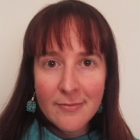Driving impact for persons with disabilities – Disability Inclusion Facilitators
Disability inclusion matters in all areas of life. It is guaranteed by human rights treaties – the most important being the UN Convention on the Rights of Persons with Disabilities – and is a deciding factor in meeting global and national development goals.
Yet the road to inclusion can seem difficult to navigate. Mainstream organisations often shy away from even trying if they lack the necessary tools and know-how. That is where Light for the World and its funding and implementing partners offer a simple, impactful, replicable way forward: The Disability Inclusion Facilitator (DIF) model.
An inclusion lens
Disability Inclusion Facilitators (DIFs) are young people with disabilities who advise civil society, international agencies, the public sector and private companies on how to implement disability inclusion.
As agents of change, they assist in making programmes, services, products and workplaces accessible. Addressing the employment gap for people with disabilities, Disability Inclusion Facilitators also help link employers with potential employees with disabilities.
Asked about their work, a DIF said: “We make others aware of the rights and abilities of people with disabilities. We want to show that barriers are there only to be removed!”
A model for different contexts
The DIF model was developed by Light for the World and its partners in the disability rights community, with crucial funding from partners including the National Lottery Community Fund.
After prototyping the model in Uganda, the model has been adapted to different contexts and countries, always in close collaboration with organisations of people with disabilities (OPDs). It is now being used in the business sector, in youth skills development, with public institutions, and in emergency settings and disaster risk reduction.
In Uganda, Dorcus Kabahenda is one of the DIF pioneers. She lends her expertise to companies wanting to become accessible, for customers and employees alike.
Responding to emergencies
During the Covid-19 pandemic-induced economic crisis, DIFs were quick to act by identifying urgent needs of people with disabilities in their communities. They helped with accessible food distribution and supported people with disabilities whose income had suffered.
Disability Inclusion Facilitators also play a vital role in humanitarian action in contexts other than the Covid pandemic. In camps for internally displaced people in South Sudan, Light for the World trained a dozen young people with disabilities as DIFs. They now work with INGOs and UN agencies on making their interventions in the camps fully disability-inclusive and have even helped create the first blind South Sudanese football team.
After the devastation caused by cyclones Idai and Kenneth in Mozambique in 2019, Light for the World’s DIFs, in collaboration with UNICEF, worked with humanitarian organisations and local authorities to make sure that emergency support reached people with disabilities.
Adaptation & replication
The DIF model roll-out has been closely monitored from the start, its impact continuously measured, with promising outcomes: It contributes to individual empowerment and strengthens peer support; it leads to job creation and inclusive entrepreneurship; and it increases inclusion and accessibility in businesses, NGOs and public institutions.
This model recognises individuals with disabilities for their lived disability experience and builds up their advocacy, business, and consultancy skills. In several instances, DIFs have been hired in formal jobs or joined the teams of Light for the World on a permanent basis.
After the approach was tried and tested in a variety of contexts, Light for the World took the next step by establishing the “Disability Inclusion Academy”: a formalised six-to-nine month training and fellowship programme. In the Disability Inclusion Academy, aspiring DIFs learn the ins and outs of disability inclusion, equipping them with the tools to help others realise inclusion and accessibility.
The model also finds its way into multi-country, multi-partner programmes such as the UK aid funded Inclusive Futures initiative. In Kenya, the DIF model will become an important element in the transformative work being done by Light for the World’s InBusiness initiative. In Bangladesh, DIFs will provide support to trainees with disabilities in BRAC’s vocational training centres, and they will advise the programmes on accessibility and inclusivity.
Learning for the future
Light for the World is eager to increase the number of DIFs and expand their range of intervention.
“The DIF model has been an amazing learning journey for our own organisation. The DIFs lead by example, they have tons of creative ideas for inclusion, and they point out when things are not fully accessible,” says Ambrose Murangira, Disability Inclusion Advisory Unit Manager at Light for the World Uganda who leads the Disability Inclusion Academy.
The organisation is keen to take the model further afield. “We are always looking for new partners to join us and take up the DIF model in their work. Our vision is to see more DIFs trained around the world,” says Sander Schot, Light for the World’s Head of Strategic Partnerships and Grants.
Authors

